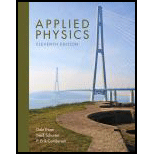
Applied Physics (11th Edition)
11th Edition
ISBN: 9780134159386
Author: Dale Ewen, Neill Schurter, Erik Gundersen
Publisher: PEARSON
expand_more
expand_more
format_list_bulleted
Concept explainers
Textbook Question
Chapter 2.1, Problem 6P
V = lwh for w
Expert Solution & Answer
Want to see the full answer?
Check out a sample textbook solution
Students have asked these similar questions
w
A & B please
I need help with this parts G,H,I
Chapter 2 Solutions
Applied Physics (11th Edition)
Ch. 2.1 - =stforSCh. 2.1 - a=tforVCh. 2.1 - w = mg for mCh. 2.1 - F = ma for aCh. 2.1 - E = IR for RCh. 2.1 - V = lwh for wCh. 2.1 - Ep = mgh for gCh. 2.1 - Ep = mgh for hCh. 2.1 - 2 = 2gh for hCh. 2.1 - XL = 2 f L for f
Ch. 2.1 - P=WtforWCh. 2.1 - p=FAforFCh. 2.1 - P=WtforiCh. 2.1 - p=FAforACh. 2.1 - Ek=12m2formCh. 2.1 - Ek=12m2Ch. 2.1 - W = Fs for SCh. 2.1 - f = i + at for aCh. 2.1 - V = E Ir for lCh. 2.1 - 2 = 1 + at for tCh. 2.1 - R=2PforPCh. 2.1 - R=kLd2forLCh. 2.1 - Prob. 23PCh. 2.1 - XC=12fCforfCh. 2.1 - R=LAforLCh. 2.1 - RT = R1 + R2 + R3 + R4 for R3Ch. 2.1 - Q1 = P(Q2 Q1) for Q2Ch. 2.1 - ISIP=NPNSforIPCh. 2.1 - VPVS=NPNSforNSCh. 2.1 - Prob. 31PCh. 2.1 - Prob. 32PCh. 2.1 - Prob. 33PCh. 2.1 - Ft=m(V2V1)forV1Ch. 2.1 - Q=I2RtJforRCh. 2.1 - x=xi+it+12at2forX1Ch. 2.1 - A = r2 for r, Where r is a radiusCh. 2.1 - V = r2h for r, Where r is a radiusCh. 2.1 - R=kLd2 for d, where d is a diameterCh. 2.1 - V=13r2h for r, where r is a radiusCh. 2.1 - Solve each formula for the quantity given. 41....Ch. 2.1 - Solve each formula for the quantity given. 42....Ch. 2.2 - For each formula, (a) solve for the indicated...Ch. 2.2 - For each formula, (a) solve for the indicated...Ch. 2.2 - For each formula, (a) solve for the indicated...Ch. 2.2 - For each formula, (a) solve for the indicated...Ch. 2.2 - For each formula, (a) solve for the indicated...Ch. 2.2 - For each formula, (a) solve for the indicated...Ch. 2.2 - For each formula, (a) solve for the indicated...Ch. 2.2 - For each formula, (a) solve for the indicated...Ch. 2.2 - For each formula, (a) solve for the indicated...Ch. 2.2 - For each formula, (a) solve for the indicated...Ch. 2.2 - For each formula, (a) solve for the indicated...Ch. 2.2 - For each formula, (a) solve for the indicated...Ch. 2.2 - For each formula, (a) solve for the indicated...Ch. 2.2 - For each formula, (a) solve for the indicated...Ch. 2.2 - For each formula, (a) solve for the indicated...Ch. 2.2 - For each formula, (a) solve for the indicated...Ch. 2.2 - For each formula, (a) solve for the indicated...Ch. 2.2 - For each formula, (a) solve for the indicated...Ch. 2.2 - For each formula, (a) solve for the indicated...Ch. 2.2 - For each formula, (a) solve for the indicated...Ch. 2.3 - Find the volume of the box in Fig. 2.3. Figure 2.3Ch. 2.3 - Find the volume of a cylinder whose height is 7.50...Ch. 2.3 - Find the volume of a cone whose height is 9.30 cm...Ch. 2.3 - Find the volume of the cylinder. Figure 2.6Ch. 2.3 - Find the cross-sectional area of the cylinder....Ch. 2.3 - Find the lateral surface area of the cylinder....Ch. 2.3 - Find the total volume of the building shown in...Ch. 2.3 - Find the cross-sectional area of the concrete...Ch. 2.3 - Find the volume of a rectangular storage facility...Ch. 2.3 - Find the cross-sectional area of a piston head...Ch. 2.3 - Find the area of a right triangle that has legs of...Ch. 2.3 - Find the length of the hypotenuse of the right...Ch. 2.3 - Find the cross-sectional area of a pipe with outer...Ch. 2.3 - Find the volume of a spherical water tank with...Ch. 2.3 - The area of a rectangular parking lot is 900m2. If...Ch. 2.3 - The volume of a rectangular crate is 192 ft3. If...Ch. 2.3 - Find the volume of a brake cylinder whose diameter...Ch. 2.3 - Find the volume of a tractor engine cylinder whose...Ch. 2.3 - A cylindrical silo has a circumference of 29.5 m....Ch. 2.3 - If the silo in Problem 19 has a capacity of...Ch. 2.3 - A wheel 30.0 cm in diameter moving along level...Ch. 2.3 - The side of the silo in Problems 19 and 20 needs...Ch. 2.3 - You are asked to design a cylindrical water tank...Ch. 2.3 - If the height of the water tank in Problem 23 were...Ch. 2.3 - A ceiling is 12.0 ft by 15.0 ft. How many...Ch. 2.3 - Find the cross-sectional area of the dovetail...Ch. 2.3 - Find tile volume of the storage bin shown in Fig....Ch. 2.3 - The maximum cross-sectional area of a spherical...Ch. 2.3 - How many cubic yards of concrete are needed to...Ch. 2.3 - What length of sidewalk 4.00 in. thick and 4.00 ft...Ch. 2.3 - Find the volume of each figure.Ch. 2.3 - Inside diameter: 20.0 cm Outside diameter: 50.0 cmCh. 2 - A formula is a. the amount of each value needed....Ch. 2 - Subscripts are a. the same as exponents. b. used...Ch. 2 - A working equation a. is derived from the basic...Ch. 2 - Cite two examples in industry in which formulas...Ch. 2 - How are subscripts used in measurement?Ch. 2 - Why is reading the problem carefully the most...Ch. 2 - How can making a sketch help in problem solving?Ch. 2 - What do we call the relationship between data that...Ch. 2 - How is a working equation different from a basic...Ch. 2 - How can analysis of the units in a problem assist...Ch. 2 - How can making an estimate of your answer assist...Ch. 2 - Solve F = ma for (a) m and (b) a.Ch. 2 - Solve =2ghforh.Ch. 2 - Solve s=12(f+i)tforf.Ch. 2 - Prob. 4RPCh. 2 - Given P = a + b + c, with P = 36 ft, a = 12 ft,...Ch. 2 - Given A=(a+b2)h, with A=210m2, b = 16.0 m, and h =...Ch. 2 - Given A = r2, if A. = 15.0 m2, find r.Ch. 2 - Given A=12bh, if b = 12.2 cm and h = 20.0 cm, what...Ch. 2 - A cone has a volume of 314 cm3 and radius of 5.00...Ch. 2 - A right triangle has a side of 41.2 mm and a side...Ch. 2 - Given a cylinder with a radius of 7 .20 cm and a...Ch. 2 - A rectangle has a perimeter of 40.0 cm. One side...Ch. 2 - The formula for the volume of a cylinder is V =...Ch. 2 - The formula for the area of a triangle is A=12bh....Ch. 2 - Find the volume of the lead sleeve with the cored...Ch. 2 - A rectangular plot of land measure 40.0 m by...Ch. 2 - You run a landscaping business and know that you...Ch. 2 - A room that measures 10.0 ft wide, 32.0 ft long,...Ch. 2 - Instead of using a solid iron beam, structural...Ch. 2 - A shipping specialist at a craft store needs to...Ch. 2 - A crane needs to lift a spool of fine steel cable...
Additional Science Textbook Solutions
Find more solutions based on key concepts
Choose the best answer to each of the following. Explain your reasoning. In which of the following objects does...
Cosmic Perspective Fundamentals
26. What is the most abundant carbonate rock?
Conceptual Physical Science (6th Edition)
BIO Muscles work in pairs Skeletal muscles produce movements by pulling on tendons, which in turn pull on bones...
College Physics
3. What is free-fall, and why does it make you weightless? Briefly describe why astronauts are weightless in th...
The Cosmic Perspective (8th Edition)
14. A light flashes at position x = 0 m. One microsecond later, a light flashes at position x = 1000 m. In a se...
College Physics: A Strategic Approach (3rd Edition)
Knowledge Booster
Learn more about
Need a deep-dive on the concept behind this application? Look no further. Learn more about this topic, physics and related others by exploring similar questions and additional content below.Similar questions
arrow_back_ios
arrow_forward_ios
Recommended textbooks for you
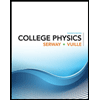 College PhysicsPhysicsISBN:9781305952300Author:Raymond A. Serway, Chris VuillePublisher:Cengage Learning
College PhysicsPhysicsISBN:9781305952300Author:Raymond A. Serway, Chris VuillePublisher:Cengage Learning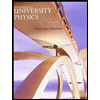 University Physics (14th Edition)PhysicsISBN:9780133969290Author:Hugh D. Young, Roger A. FreedmanPublisher:PEARSON
University Physics (14th Edition)PhysicsISBN:9780133969290Author:Hugh D. Young, Roger A. FreedmanPublisher:PEARSON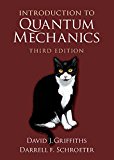 Introduction To Quantum MechanicsPhysicsISBN:9781107189638Author:Griffiths, David J., Schroeter, Darrell F.Publisher:Cambridge University Press
Introduction To Quantum MechanicsPhysicsISBN:9781107189638Author:Griffiths, David J., Schroeter, Darrell F.Publisher:Cambridge University Press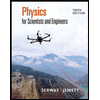 Physics for Scientists and EngineersPhysicsISBN:9781337553278Author:Raymond A. Serway, John W. JewettPublisher:Cengage Learning
Physics for Scientists and EngineersPhysicsISBN:9781337553278Author:Raymond A. Serway, John W. JewettPublisher:Cengage Learning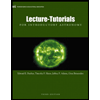 Lecture- Tutorials for Introductory AstronomyPhysicsISBN:9780321820464Author:Edward E. Prather, Tim P. Slater, Jeff P. Adams, Gina BrissendenPublisher:Addison-Wesley
Lecture- Tutorials for Introductory AstronomyPhysicsISBN:9780321820464Author:Edward E. Prather, Tim P. Slater, Jeff P. Adams, Gina BrissendenPublisher:Addison-Wesley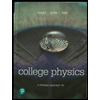 College Physics: A Strategic Approach (4th Editio...PhysicsISBN:9780134609034Author:Randall D. Knight (Professor Emeritus), Brian Jones, Stuart FieldPublisher:PEARSON
College Physics: A Strategic Approach (4th Editio...PhysicsISBN:9780134609034Author:Randall D. Knight (Professor Emeritus), Brian Jones, Stuart FieldPublisher:PEARSON

College Physics
Physics
ISBN:9781305952300
Author:Raymond A. Serway, Chris Vuille
Publisher:Cengage Learning

University Physics (14th Edition)
Physics
ISBN:9780133969290
Author:Hugh D. Young, Roger A. Freedman
Publisher:PEARSON

Introduction To Quantum Mechanics
Physics
ISBN:9781107189638
Author:Griffiths, David J., Schroeter, Darrell F.
Publisher:Cambridge University Press

Physics for Scientists and Engineers
Physics
ISBN:9781337553278
Author:Raymond A. Serway, John W. Jewett
Publisher:Cengage Learning

Lecture- Tutorials for Introductory Astronomy
Physics
ISBN:9780321820464
Author:Edward E. Prather, Tim P. Slater, Jeff P. Adams, Gina Brissenden
Publisher:Addison-Wesley

College Physics: A Strategic Approach (4th Editio...
Physics
ISBN:9780134609034
Author:Randall D. Knight (Professor Emeritus), Brian Jones, Stuart Field
Publisher:PEARSON
Length contraction: the real explanation; Author: Fermilab;https://www.youtube.com/watch?v=-Poz_95_0RA;License: Standard YouTube License, CC-BY